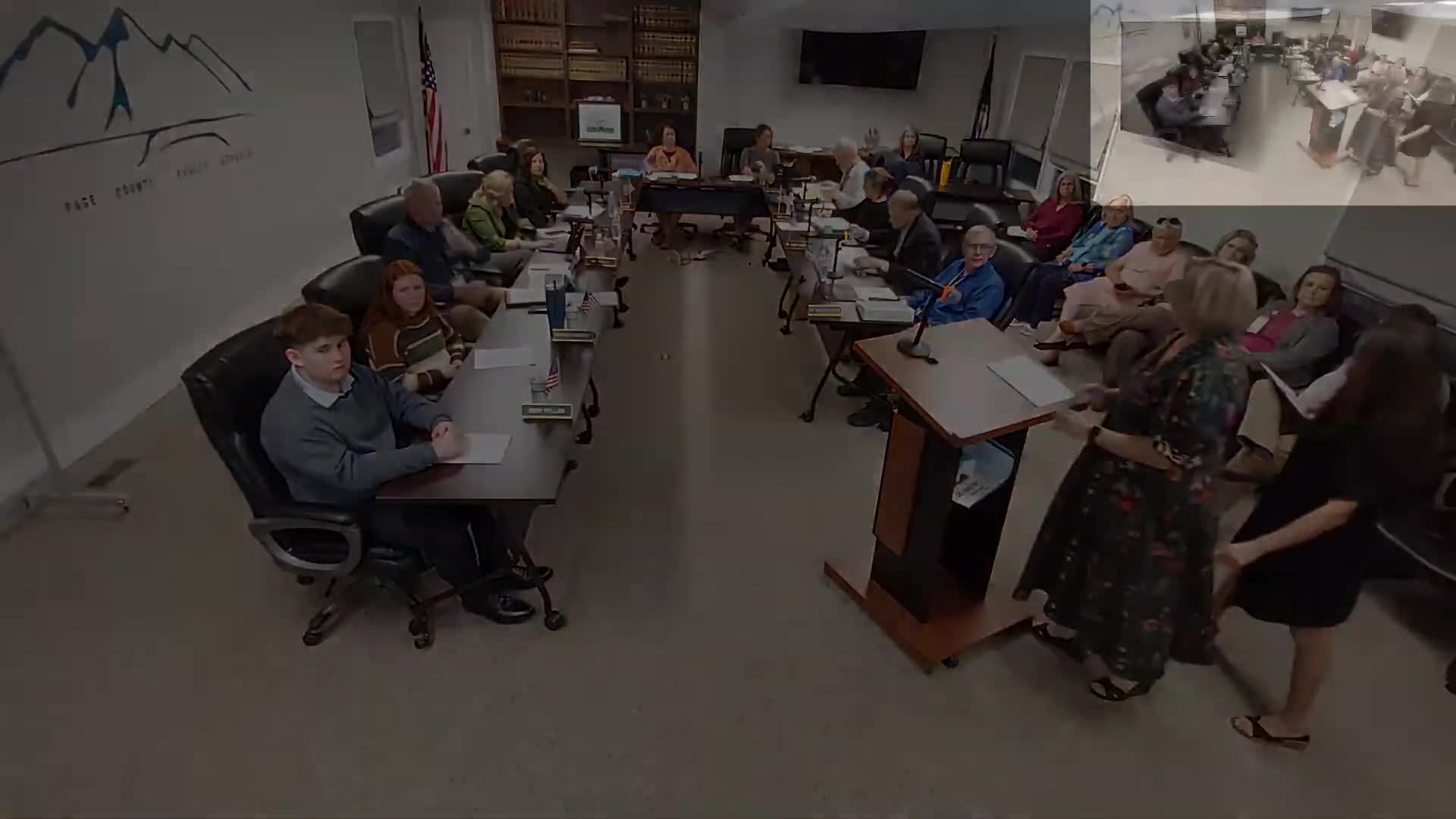Stanley Elementary details reading and attendance work as division outlines school-improvement plan process
October 10, 2025 | PAGE CO PBLC SCHS, School Districts, Virginia
This article was created by AI summarizing key points discussed. AI makes mistakes, so for full details and context, please refer to the video of the full meeting. Please report any errors so we can fix them. Report an error »

Stanley Elementary staff presented school performance data, attendance-reduction strategies and program highlights while Page County instructional leaders outlined a combined Continuous School Improvement Plan (CSIP) process that will guide school goals and follow-up visits.
At the board meeting Anita Webb presented Stanley's priorities, citing reading and math needs in lower grades and chronic absenteeism as a focus. Webb described targeted small-group instruction, expanded use of an instructional assistant, and the after-school 21st Century Community Learning Centers (CCLC) program as supports. She reported raw internal percentages for reading and math by grade (third-grade reading 41.67%, fourth-grade reading 54.17%, fifth-grade reading 72.13%; combined reading 56%; third-grade math 50%, fourth-grade math 65.31%, fifth-grade math 72.13%), and said that the school is tracking progress using local benchmark data while final state accountability calculations remain pending.
Webb also described attendance work: daily verification calls, an attendance-monitoring spreadsheet, attendance awards (weekly, monthly, quarterly) and use of CCLC tutoring to help students make up missed instructional time. She reported a figure for chronic absenteeism that she cited as "00.058%" of students with five or more absences in the period shown in the presentation and said the school had disaggregated CCLC participation showing 651.25 hours of student time recovered through that program.
Instructional staff followed with a presentation on school improvement plans and monitoring. The division said it has combined the state-required school improvement template with Title I requirements for eligible elementary schools so each school maintains a single CSIP. The instructional team said the CSIP template requires a needs assessment, SMART goals (the presentation included an example: "By 02/19/26 Stanley Elementary will increase reading scores for economically disadvantaged students from 45% to 75% on the Virginia SOL"), action steps with assigned responsibilities, and an "evidence of progress" column where schools must link artifacts and data.
Division staff reported 177 separate visits to schools by instructional staff so far this year and said frequency of follow-up will depend on accountability status (monthly for schools in improvement; every-other-month for others). The presentation emphasized using benchmark tools such as IXL and local CIP quarterly checks to measure progress and required evidence to show schools are implementing action steps.
Why this matters: the CSIP and monitoring process determine what interventions schools use, how central office supports are targeted, and the timing for corrective actions if benchmarks are not met.
No formal board action was requested; the CSIP template and monitoring approach were described as implementation steps the instructional team will use going forward.
At the board meeting Anita Webb presented Stanley's priorities, citing reading and math needs in lower grades and chronic absenteeism as a focus. Webb described targeted small-group instruction, expanded use of an instructional assistant, and the after-school 21st Century Community Learning Centers (CCLC) program as supports. She reported raw internal percentages for reading and math by grade (third-grade reading 41.67%, fourth-grade reading 54.17%, fifth-grade reading 72.13%; combined reading 56%; third-grade math 50%, fourth-grade math 65.31%, fifth-grade math 72.13%), and said that the school is tracking progress using local benchmark data while final state accountability calculations remain pending.
Webb also described attendance work: daily verification calls, an attendance-monitoring spreadsheet, attendance awards (weekly, monthly, quarterly) and use of CCLC tutoring to help students make up missed instructional time. She reported a figure for chronic absenteeism that she cited as "00.058%" of students with five or more absences in the period shown in the presentation and said the school had disaggregated CCLC participation showing 651.25 hours of student time recovered through that program.
Instructional staff followed with a presentation on school improvement plans and monitoring. The division said it has combined the state-required school improvement template with Title I requirements for eligible elementary schools so each school maintains a single CSIP. The instructional team said the CSIP template requires a needs assessment, SMART goals (the presentation included an example: "By 02/19/26 Stanley Elementary will increase reading scores for economically disadvantaged students from 45% to 75% on the Virginia SOL"), action steps with assigned responsibilities, and an "evidence of progress" column where schools must link artifacts and data.
Division staff reported 177 separate visits to schools by instructional staff so far this year and said frequency of follow-up will depend on accountability status (monthly for schools in improvement; every-other-month for others). The presentation emphasized using benchmark tools such as IXL and local CIP quarterly checks to measure progress and required evidence to show schools are implementing action steps.
Why this matters: the CSIP and monitoring process determine what interventions schools use, how central office supports are targeted, and the timing for corrective actions if benchmarks are not met.
No formal board action was requested; the CSIP template and monitoring approach were described as implementation steps the instructional team will use going forward.
View full meeting
This article is based on a recent meeting—watch the full video and explore the complete transcript for deeper insights into the discussion.
View full meeting
